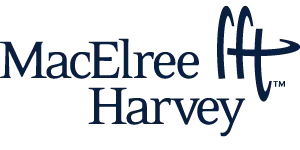Lawsuits Against Bars and Restaurants?
In Pennsylvania, it is illegal for a liquor license holder, like a bar or restaurant, to serve patrons who are minors (under the age of 21) or people who are “visibly intoxicated.” If this law is violated and if injuries or damages result from a violation of the law, the liquor license holder can be sued.
The Liquor Code
The Dram Shop Law makes it unlawful to sell, furnish or give alcohol to any minor, any person visibly intoxicated, any insane person, any habitual drunkard or any person of known intemperate habits. Legal liability for the consequences of such service, however, is limited to situations where the license holder serves a minor or visibly intoxicated person.
The Dram Shop Law
A bar or restaurant can be held legally liable for the consequences of violating the Liquor Code in relation to serving a minor or visibly intoxicated person. Two things must be proven: (1) The license holder violated the law ? that is served a minor or visibly intoxicated person; and (2) The violation of the Liquor Code caused the injuries or damages.
Legal claims under the Dram Shop Law arise in various circumstances. Examples include the following:
- A lawsuit by a person injured in a fight started by someone who was served while visibly intoxicated
- A lawsuit filed by someone who was injured by an automobile accident caused by a driver who was served as a minor or while visibly intoxicated; and
- A lawsuit by the drunk person himself who was injured after being served as a minor or visibly intoxicated (like running his car off the road, getting hit as a pedestrian or falling down and sustaining injury).
“Visibly Intoxicated”
This issue of whether a violation occurred regarding service of a minor is straightforward ? if the person served was under 21, the service was illegal ? period, end of story. However, proving that someone was served while “visibly intoxicated” is more problematic. Essentially, the person filing the lawsuit has the burden of presenting evidence that the person who caused injuries was served while visibly intoxicated; such as after exhibiting signs of drunkenness like glassy and bloodshot eyes, slurred speech, staggering or falling down, loud or obnoxious behavior, etc. This is usually established through testimony of eyewitnesses who were in the bar. Expert witnesses can also be used to testify about blood alcohol content and how an average person would have been behaving.
Causation
The injured party must also show that the improper service of alcohol caused the accident and injuries at issue. It is not enough just to establish a violation of the law. Instead, the improper service must have a direct link to the accident. For example, if a bar served someone while he was visibly intoxicated but, afterward, the person drank much more alcohol outside the bar and the accident occurred hours after leaving the bar, there would be a “causation” problem.
The strongest Dram Shop cases involve someone who had nothing to drink before entering the bar, drank to excess with many witnesses of visible signs of intoxication and continued service by the bartender and then an accident occurred immediately thereafter with a clear tie to the person’s intoxication.
The following article is informational only and not intended as legal advice. Speak with a licensed attorney about your own specific situation. © Copyright 2011 MacElree Harvey, Ltd. All rights reserved.


Leave a Reply